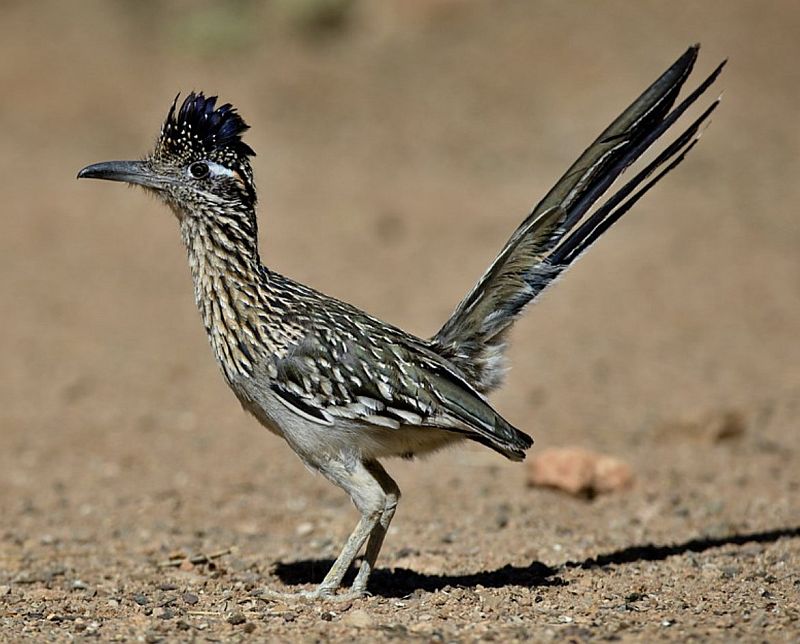Habitat: The Brown Falcon (Falco berigora) is usually seen alone or in pairs, but in the non-breeding season several may be seen within sight of each other. Brown falcons perform display flights as breeding approaches. The courting pair, and perhaps an interloping male, fly rapidly around in circles and perform a variety of aerial maneuvers, including gliding with wings held in a high V-shape, while uttering a loud cackling call.
Both sexes incubate and brood, although the female shoulders most of these duties while the male hunts. When he brings food, she leaves the nest to take it from him in midair or at a perch nearby, eating it there or carrying it back to the nest to apportion among her young.
Moreover, small prey—mice, little birds, and insects—may be carried in the bill, but larger items are clasped in the talons. Young people become independent within days of fledging and leave their parents soon after. The brown falcon is one of the most widespread and abundant Australian raptors. Although it is primarily a bird of open grassy woodland, it is well adapted to agricultural areas and towns.
Color Variation: It has six main color forms, ranging from all dusky like a Black Falcon to light rufous and white like a Kestrel. Although most color types can be found together in all places except Tasmania and New Guinea, light rufous birds prevail inland. This suggests genetic selection in response to the environment, known as ‘balanced polymorphism’.
Flight: The flight and hunting methods of the Brown Falcon differ markedly from those of other falcons. Both its wing beats and flight are relatively slow. It is usually seen quietly perched or flying, alternately beating its wings and gliding with wings held up in a shallow ‘V’. It sometimes hovers rather inefficiently, but it can soar to great heights.
Diet: The Brown Falcon rarely hunts by chasing its prey on the wing. Its main method of searching for food is to sit quietly on a high perch, such as a branch of a dead tree or telegraph pole, and watch the ground. It drops down on the victim and grabs it with its talons. It also does some searching while gliding low. It eats small mammals, including house mice and occasionally young rabbits; some small birds, lizards, and snakes; and number of invertebrates, particularly caterpillars, grasshoppers, crickets, and beetles. It has been seen chasing grasshoppers on the ground and catching them with its bill as well as with its talons.
Identification: Both adults are similar. However, there are six basic forms, with intergrades: (a) wholly dusky brown. (b) dark brown above and deep rufous below with fine dusky shaft streaks. (c) wholly dark brown with cream-white spotting on underparts; (d) deep russet above and lighter rufous below. (e) mid-russet above and white below; deep brown above and cream white below. All these forms have a dusky tear stripe below the eye, dark thighs, finely spotted or barred flanks, dark grey-brown flight feathers with buff spots or bars beginning on the fourth to sixth inwards, and grey-brown tails with close rufous bars. Eyes are dark brown. Bill is blue-grey with a black tip; cere and orbital skin are usually grey-white. Distinctively long feet and toes pale grey; claws black.
All Immature birds are brown-backed and cream-breasted in the first year, with coarsely blotched flanks and incompletely barred tails. Older birds resemble their adult phase but have more coarsely marked flanks. The downy young man is white, with grey bills and feet.
Vocalizations: The brown falcon voice consists of clear, loud cackling calls uttered frequently on the wing, particularly in display.
Nesting: The nesting breeds opportunistically from June to November in the south and through to March and later in the north. Usually appropriates an old nest of another species of hawk; occasionally nests in an open tree hollow; sometimes builds its own large nest of sticks, lined with finer material and green leaves.
Eggs and Incubation: The bird lays two to five, usually three eggs; pale buff, with many red-brown spots and blotches; oval, about 50 x 38 mm. The incubation period is just over 30 days for both sexes. Young fledge in 40–45 days.
Alternative Names: It is also known as Brown Hawk and Cackling Hawk.
Size: The brown falcon male is 450 mm; the female is 500 mm in length with a wingspan of 85 to 95 cm.
Life Span: Brown Falcons can live up to 20–22 years in the wild, however, life expectancy is usually shorter due to environmental pressures.
Distribution: The brown falcon is found throughout Australia. It is also found in islands off the northeastern coast of New Guinea. Brown Falcon is a sedentary bird, but locally nomadic, or a partial migrant in Tasmania. It is also found in open-forested countries. Around inhabited areas, it sometimes becomes rather tame. So variable is the Brown Falcon in its plumages that it has often been mistaken for more than one species.
Races: There are two races. The first race is consistently brown-and-white in Tasmania and mixing with other color forms across southern and eastern Australia; the other is consistently brown-and-rufous in New Guinea and mixing with other forms across northern Australia. All other color types are endemic to mainland Australia.
Family: Falconidae
Read More: Grey Falcon: The rarest raptor in Australia







